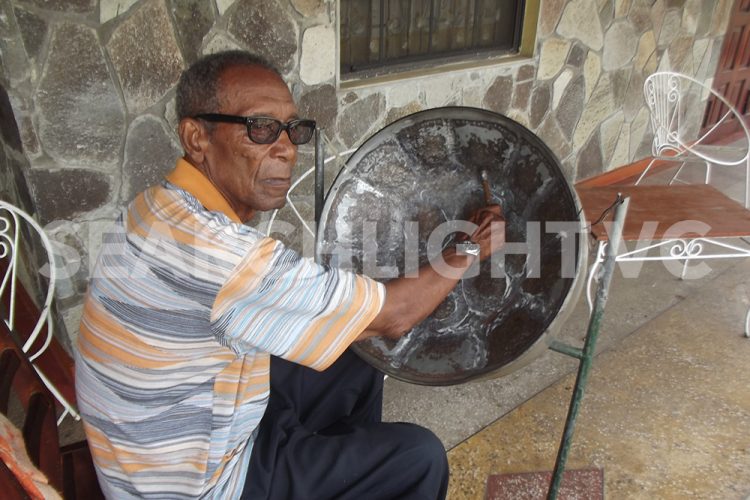 Frank Laborde Anderson
Frank Laborde Anderson
Dis week ah revisiting an article ah wrote in June of 2018 about an unsung Hero named Frank Laborde. Ah very quiet, humble and approachable man. Oh how he loved his privacy. But when Paddy Corea, ah Pan-ah-maniac mentioned his name and told me dat Frank was a Legend of Pan and don’t let him escape, ah went chasing him.
Wid ah great deal of sweet-talk, ah finally got Mr Frank to sit down and talk foh ah while. He was born in New Town, Old Montrose now known as Block 2000. He refused to disclose his age, told me dat was not important. But my calculations tell me dat since he was ah lad in Met-dis and Anglican Primary School during de Riot of 1935, den Frank had to be closer to100 years, dan he actually looks.
In De early 1940’s, dis youth-man migrated to Trinidad, de land of steel band. He be-friended Norbert Vanderpool, a co-worker and a member of Invaders steel band. Norbert invited Frank to a practice session in the Pan Yard in Woodbrooke, and Frank was simply fascinated with everything he saw and heard, in particular the Ping Pong or lead instrument dat is today deTenor Pan. Wid his photograph memory he took ah lot ah mental pictures. In his own words: “ Ah noticed de notes on de Tenor Pan were not arranged in the diatonic scale, or normal alphabetical order, dey were scattered all over the pan, dat was called de “Scatter Note Pan.”
When Frank left Invaders Pan-yard dat night he vowed dat he was going to build a Pan exactly like de one he saw. His main ambition was to be able to play de song: “Oh Danny Boy” ah song dat climaxed wid ah flow of notes in de higher octave. He frequented Invaders Pan Yard and got ah lot ah tips in Pan-making. So in 1948, it was SVG here I come, back to good Ole Montrose, Block 2000, home of Rising Star Steel Band and later, Starlift.
By now he had warmed up to me and began to speak out: “ From de time ah reach I went to work on my Scatter Note Pan, Dat Pan!” He said, “eventually became de first of its kind (ah Pan wid Scatter Notes) to be built in SVG;” In his own words he stated dat he obtained an oil drum from ESSO at Arnos Vale, cut-off seven inches from the bottom that has no holes/nozzles. Next step was ‘sinking the Pan’ i.e. pounding the surface inwards creating a bowl (concave). With a chalk he drew the elliptical shaped notes, bigger shapes for the notes in the lower scale, and small shapes for the higher notes. His tools were ah punch or small cold-chisel and a hammer, and skillfully he carved along the chalk marks to form or separate the notes, each note with a convex shape. Grooving stage complete with eighteen notes, de Pan was heated for fifteen minutes on ah ‘wood fire and three stones’, then immediately thrown in the small stream nearby ‘to cool down’.

Replies